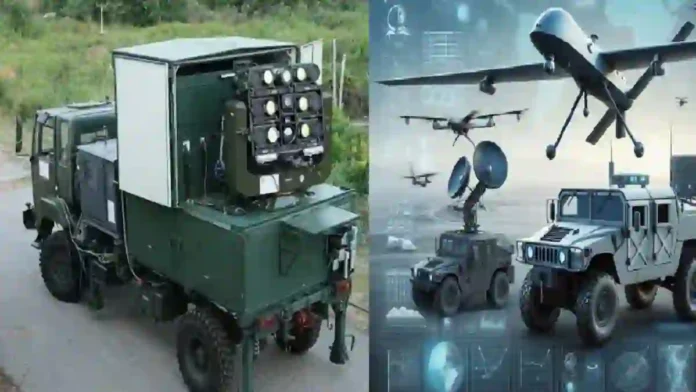The Defence Research and Development Organisation (DRDO) is undergoing a strategic transformation under the banner of DRDO 2.0, marking a decisive shift from traditional weapons development to a focus on future warfare technologies. This new approach is spearheaded by senior officials like Dr. B.K. Das, who emphasise that the wars of tomorrow will be determined by technological superiority rather than conventional firepower.
Key Elements of DRDO 2.0
Shift To Advanced Technologies: DRDO is prioritising research and development in areas such as directed energy weapons (DEWs), quantum systems, artificial intelligence (AI), and photonics. This pivot is intended to ensure India remains competitive in next-generation warfare, where speed, precision, and adaptability are paramount.
Read- India Prepares To Test K-6 Hypersonic Missile, Faster And Deadlier Than BrahMos, From Submarine
Handing Over Conventional Systems: The organisation is transferring the bulk of conventional weapons development and production to the private sector, retaining only a 10–20% support role. This enables DRDO to focus its resources on long-term, high-impact research, while private industry scales up manufacturing and deployment.
Breakthroughs In Directed Energy And Photonics: Recent achievements include the development of India’s first indigenous photonic radar, which uses light-based technology for superior detection and tracking, and a 30-kilowatt laser weapon capable of neutralising drones and projectiles at ranges up to 5 kilometers. The photonic radar, developed by DRDO’s LRDE, offers high resolution and the ability to detect even small, fast-moving objects, making it a game-changer for both military and civilian applications.
Operational Systems And Urban Security: DRDO’s D4 anti-drone platform is already operational, integrating AI, radar, and laser systems to detect, jam, and destroy rogue UAVs in urban and border environments. The system’s dual “soft kill” (jamming) and “hard kill” (laser destruction) capabilities are tailored for India’s evolving security challenges, including recent successful deployments in military operations.
Bridging Technology Gaps: Acknowledging gaps in critical areas like air power, DRDO is investing in foundational research for AI/ML, quantum communication, and cognitive systems. These projects, while complex and time-consuming, are viewed as essential for closing the technological divide with global leaders.
Collaborative Production Model: The Develop and Produce with Production Partner (DCPP) model involves private companies from the earliest design stages, ensuring smoother transitions from prototype to mass production. This approach has already shown results in projects like the Akash and BrahMos systems, with private industry playing a key role in their deployment.
Read- One Strikes With Blazing Speed, The Other Kills With Stealth; BrahMos, Tomahawk Explained
Strategic Vision
The overarching vision of DRDO 2.0 is to future-proof India’s defence capabilities by focusing on deep-tech research and fostering a robust domestic defence industry.
By acting as a technology incubator and delegating conventional production to private partners, DRDO seeks to accelerate innovation, bridge critical technology gaps, and ensure India’s armed forces are equipped for the complex, technology-driven battlespaces of the future.
As Dr. Das metaphorically described, the organisation is preparing all the essential “ingredients” for a future where India’s security is underpinned by indigenous, cutting-edge technologies—even if the final “Pizza” is not yet visible today.
DRDO’s new strategy aims to maintain India’s relevance in a rapidly evolving global defence landscape by focusing on future warfare technologies and leveraging private sector innovation for conventional systems.
The organisation’s recent operational successes, including the deployment of indigenous systems in high-profile military operations, underscore the growing maturity and capability of India’s defence R&D ecosystem.
Based On ET News Report
Agencies




